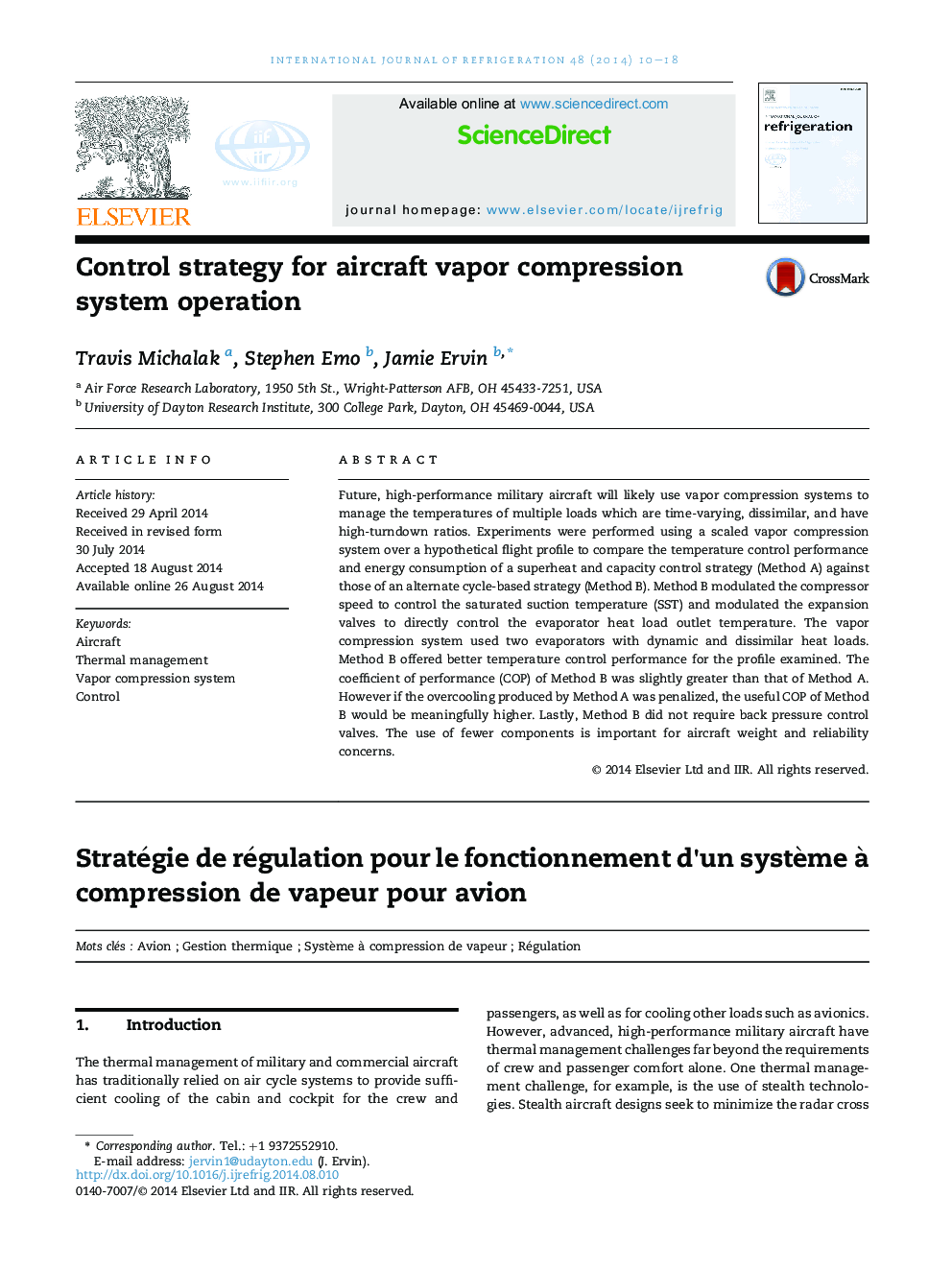| Article ID | Journal | Published Year | Pages | File Type |
|---|---|---|---|---|
| 786871 | International Journal of Refrigeration | 2014 | 9 Pages |
•We performed vapor compression system experiments using scaled aircraft thermal loads.•We compared superheat and capacity control with a cycle-based control.•Cycle-based control demonstrated better temperature control performance.
Future, high-performance military aircraft will likely use vapor compression systems to manage the temperatures of multiple loads which are time-varying, dissimilar, and have high-turndown ratios. Experiments were performed using a scaled vapor compression system over a hypothetical flight profile to compare the temperature control performance and energy consumption of a superheat and capacity control strategy (Method A) against those of an alternate cycle-based strategy (Method B). Method B modulated the compressor speed to control the saturated suction temperature (SST) and modulated the expansion valves to directly control the evaporator heat load outlet temperature. The vapor compression system used two evaporators with dynamic and dissimilar heat loads. Method B offered better temperature control performance for the profile examined. The coefficient of performance (COP) of Method B was slightly greater than that of Method A. However if the overcooling produced by Method A was penalized, the useful COP of Method B would be meaningfully higher. Lastly, Method B did not require back pressure control valves. The use of fewer components is important for aircraft weight and reliability concerns.
